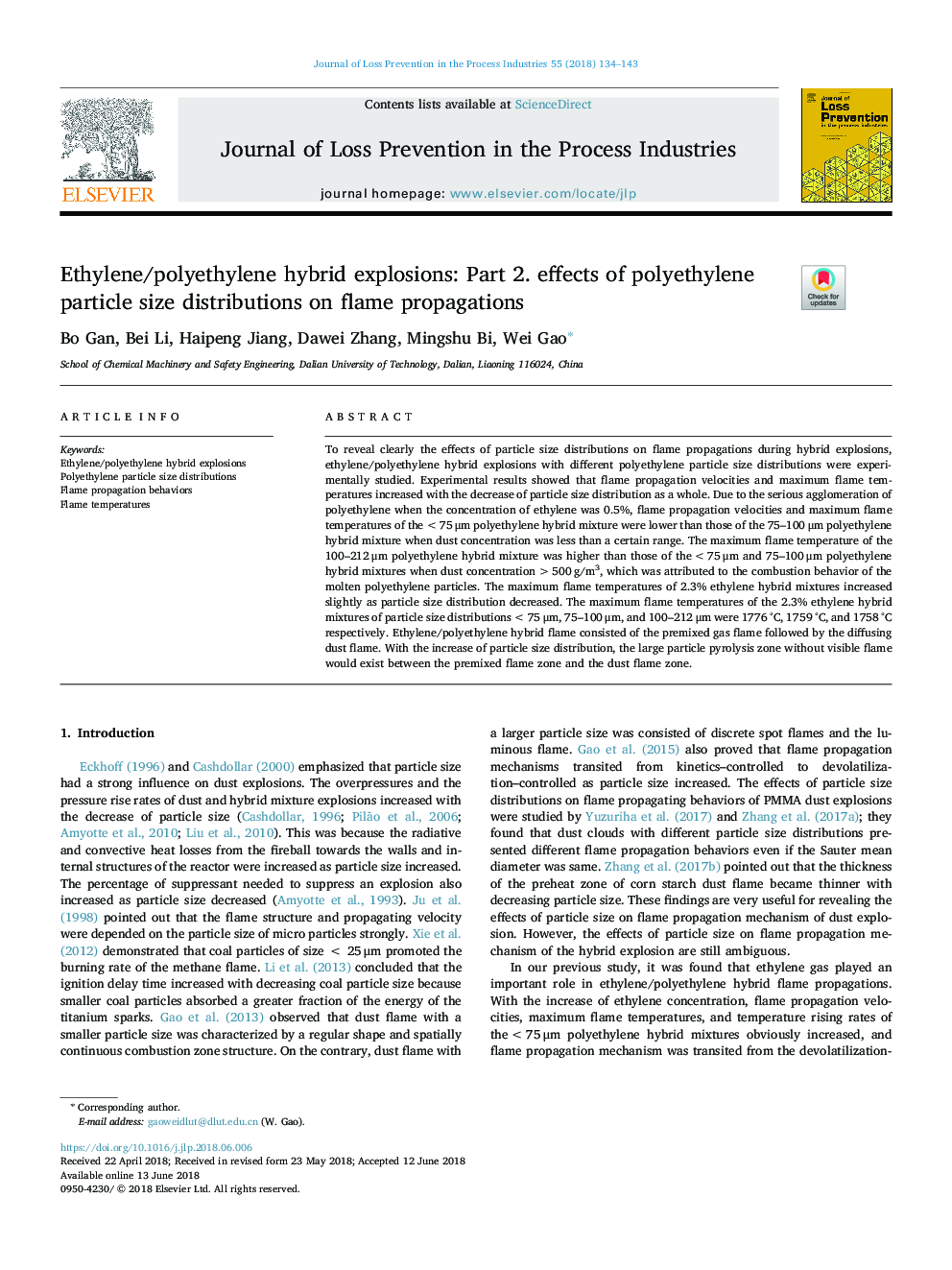| Article ID | Journal | Published Year | Pages | File Type |
|---|---|---|---|---|
| 6972760 | Journal of Loss Prevention in the Process Industries | 2018 | 10 Pages |
Abstract
To reveal clearly the effects of particle size distributions on flame propagations during hybrid explosions, ethylene/polyethylene hybrid explosions with different polyethylene particle size distributions were experimentally studied. Experimental results showed that flame propagation velocities and maximum flame temperatures increased with the decrease of particle size distribution as a whole. Due to the serious agglomeration of polyethylene when the concentration of ethylene was 0.5%, flame propagation velocities and maximum flame temperatures of the <75â¯Î¼m polyethylene hybrid mixture were lower than those of the 75-100â¯Î¼m polyethylene hybrid mixture when dust concentration was less than a certain range. The maximum flame temperature of the 100-212â¯Î¼m polyethylene hybrid mixture was higher than those of the <75â¯Î¼m and 75-100â¯Î¼m polyethylene hybrid mixtures when dust concentration >500â¯g/m3, which was attributed to the combustion behavior of the molten polyethylene particles. The maximum flame temperatures of 2.3% ethylene hybrid mixtures increased slightly as particle size distribution decreased. The maximum flame temperatures of the 2.3% ethylene hybrid mixtures of particle size distributions <75â¯Î¼m, 75-100â¯Î¼m, and 100-212â¯Î¼m were 1776â¯Â°C, 1759â¯Â°C, and 1758â¯Â°C respectively. Ethylene/polyethylene hybrid flame consisted of the premixed gas flame followed by the diffusing dust flame. With the increase of particle size distribution, the large particle pyrolysis zone without visible flame would exist between the premixed flame zone and the dust flame zone.
Keywords
Related Topics
Physical Sciences and Engineering
Chemical Engineering
Chemical Health and Safety
Authors
Bo Gan, Bei Li, Haipeng Jiang, Dawei Zhang, Mingshu Bi, Wei Gao,
